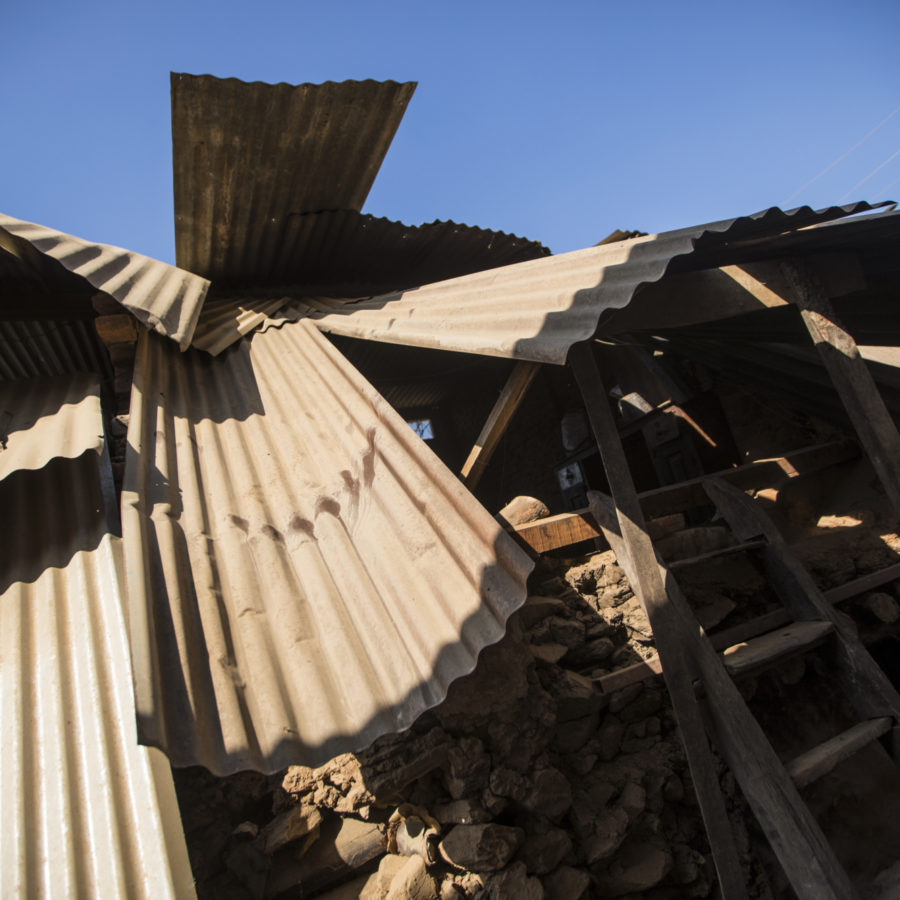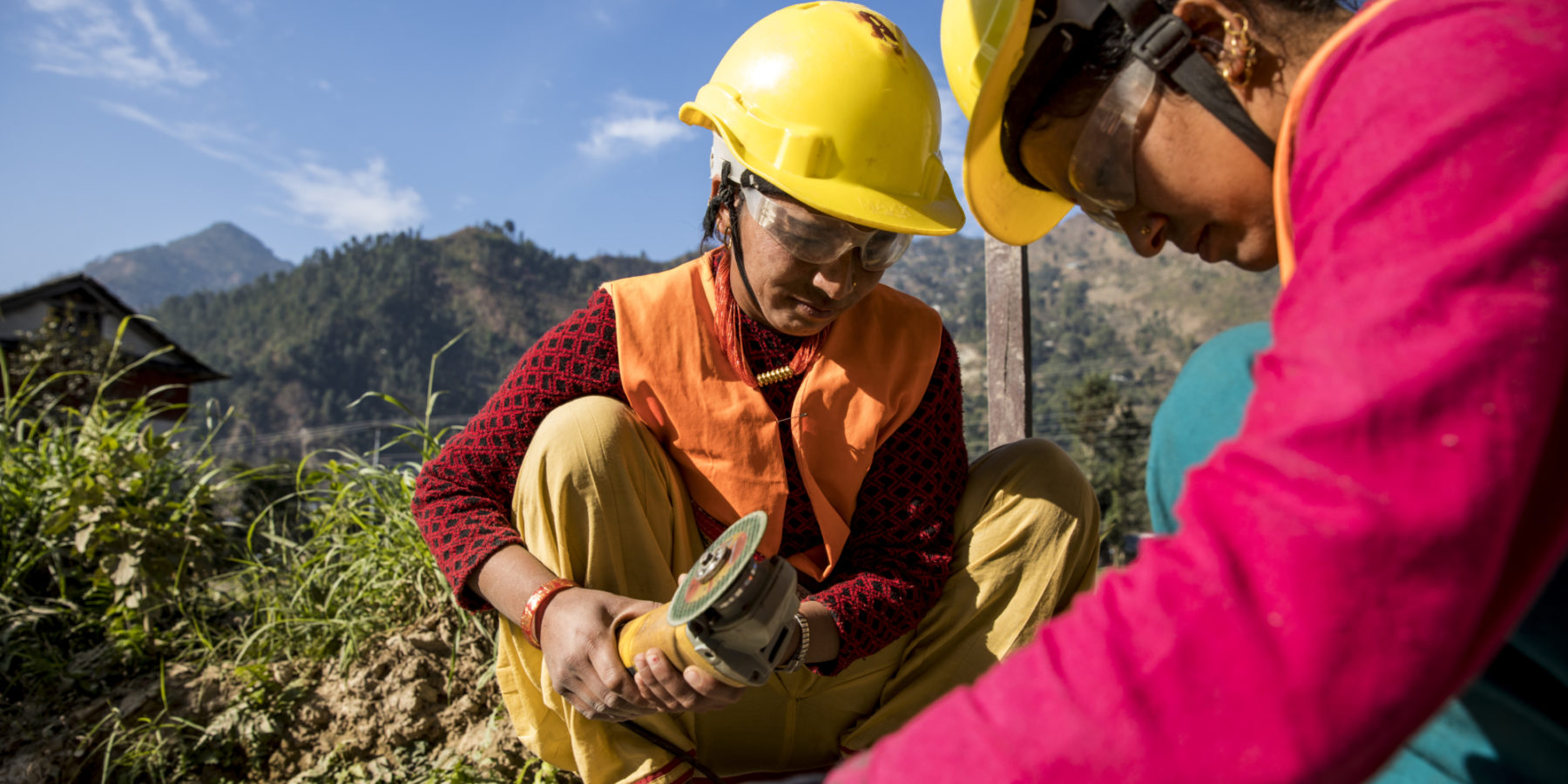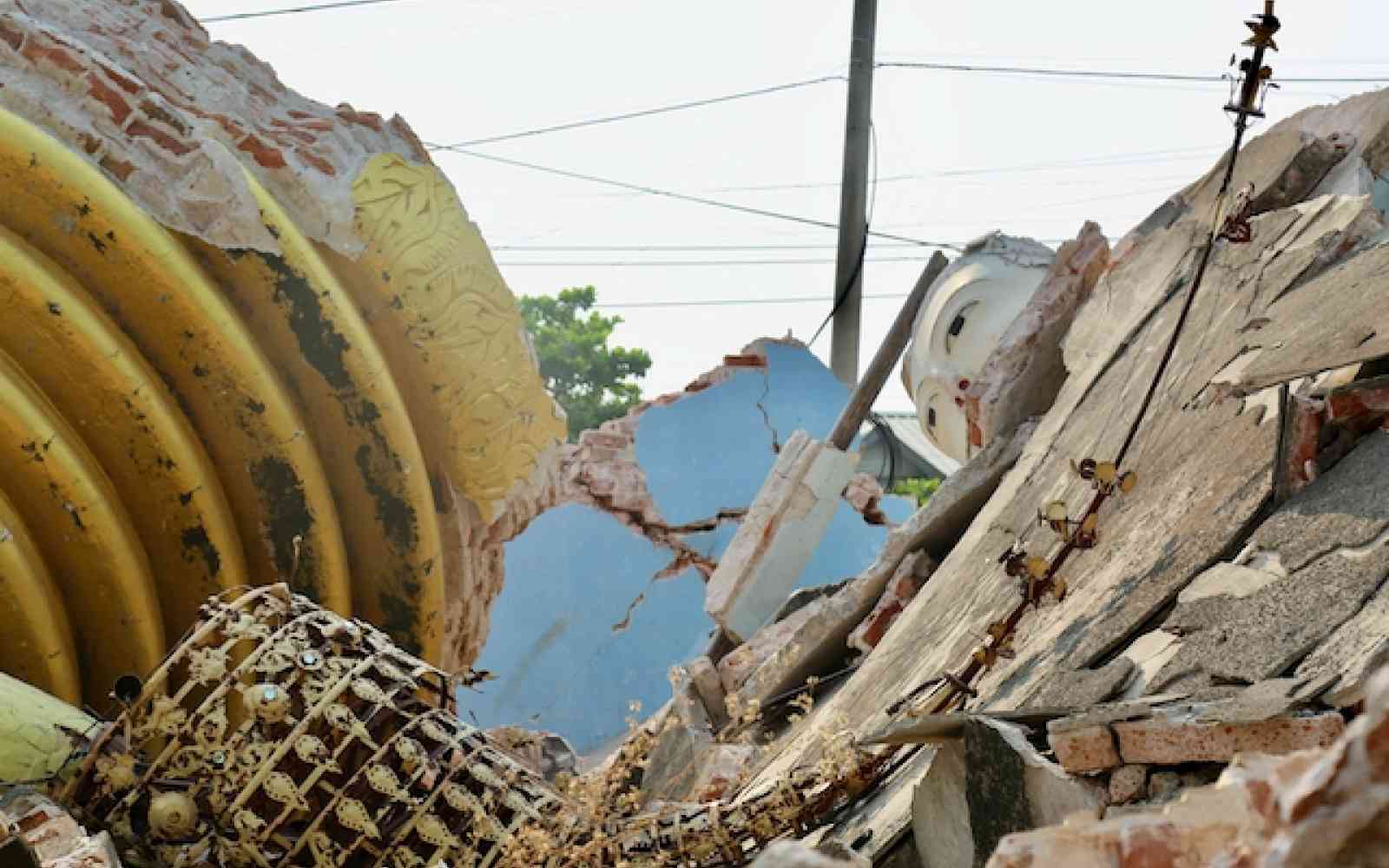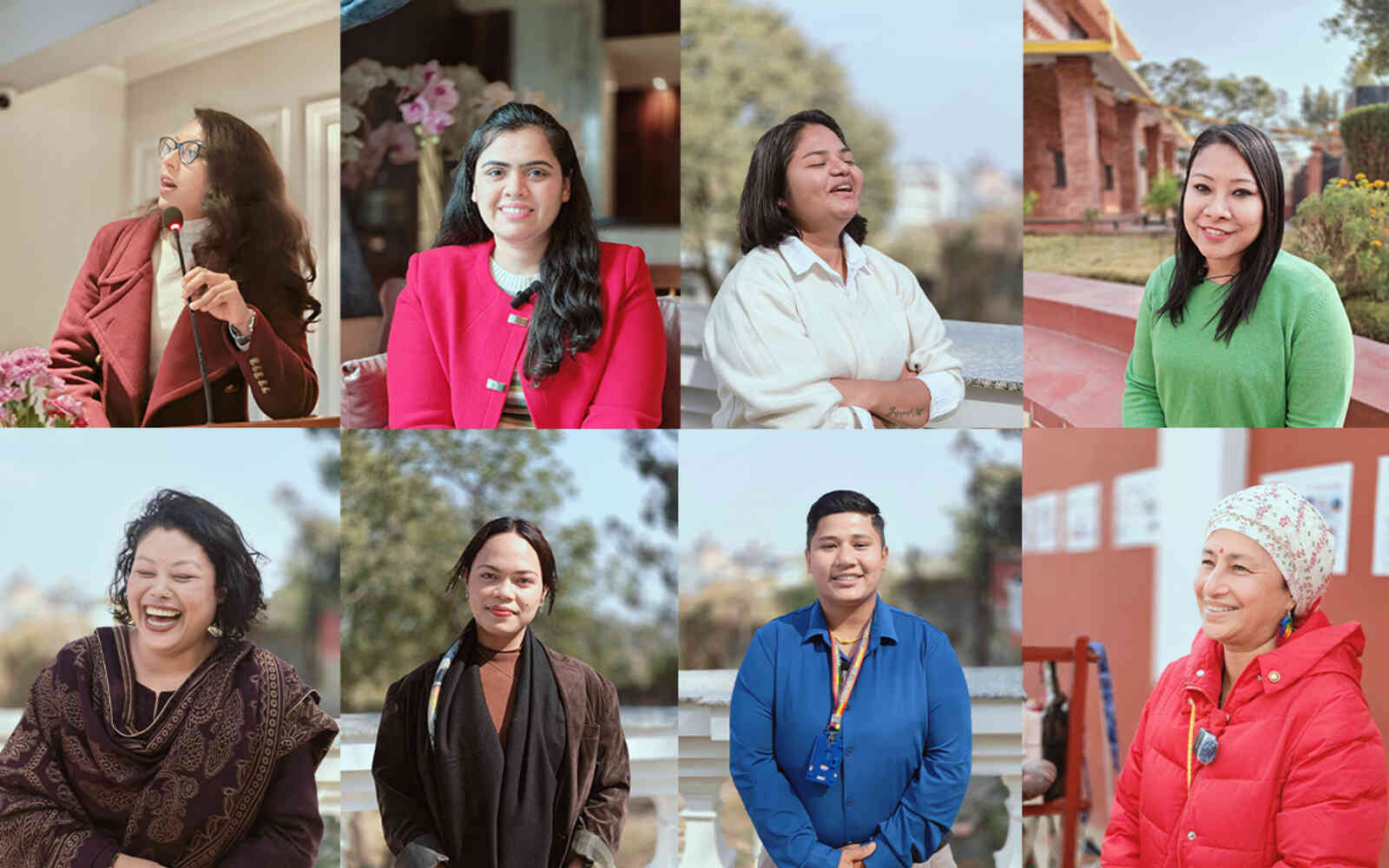The United Nations Office for Project Services (UNOPS)

When Nepal shook
Over four years ago two major earthquakes devastated many lives in Nepal. Along with partners we’re helping thousands of women and men rebuild their homes and livelihoods, for a chance at a brighter and more secure future.
Kathmandu sits atop one of the most seismically hazardous places on earth, on the border between the Indian and Eurasian tectonic plates. Between 40 and 50 million years ago these plates collided to form the jagged peaks of the Himalayan mountain range. On 25 April 2015 a release of pressure along this major fault line caused a 7.6 magnitude earthquake, shaking the ground over 70 km away from Nepal’s capital city.
Not over yet, another 7.3 magnitude earthquake followed less than a month later, on 12 May, accompanied by a series of aftershocks. The second earthquake near the Chinese border set in motion a series of avalanches on Mount Everest and the Langtang Valley, flattening entire villages and destroying neighbourhoods in the Kathmandu Valley.
The events of those fateful days had a devastating human impact – affecting over 5.6 million women, men and children and leaving 2.8 million people displaced.
Photos
- ©UNOPS/John Rae


Lives disrupted
When she relives the day of the first earthquake, 45 year old Deepshika Dahal remembers standing at the foot of a hill, dressed in her finest clothes amid a group of friends on their way to a wedding celebration. That was minutes before the ground beneath Likhu – Deepshika’s rural municipality – began to tremble. Once the dust and smoke that clouded their vision settled, Deepshika and her friends rushed back to their homes.
“As soon as I reached my house, I realized that there were major cracks in the walls of the house. The house wasn't totally damaged, but there were cracks everywhere, which had made it unsafe to live in the same house,” she explains.

Not sure where to go, Deepshika moved out into an open field nearby with her husband and two children. The family’s immediate solution turned into two years of making their home under a makeshift shelter created with a tarp and sticks, in that same field.
In Bidur, a neighbouring municipality, on that same April day, Bhuwan Raj was on emergency duty at the local hospital when the earthquake hit. Along with colleagues, Bhuwan ran out of the building only to see homes and buildings shaking around them. For nearly half an hour after the initial earthquake, the aftershocks kept coming. Bhuwan and other hospital staff were unable to treat patients until the aftershocks stopped.
“Most of our medical equipment were buried as the strong tremors had turned the hospital into rubble. However, we tried to treat the incoming patients with all that we could arrange from what was remaining and tried to assemble first aid kits,” recalls Bhuwan.

By the time Bhuwan was able to return home several hours later he found that his house had been reduced to rubble. Fortunately, his family was unharmed. Like Deepshikha, Bhuwan and his family also moved into an open space, using whatever materials were available to build temporary shelters.
“Everyone were going through the same scarcity so [we] did not have a choice to live at other's place as well,” he says. “It was sad to see how everyone was living under such circumstances.”
Rebuilding lives and futures
Along with efforts funded by the United Kingdom’s Department for International Development and USAID, the government of India teamed up with UNOPS to reach thousands of earthquake survivors like Deepshika and Bhuwan to help them rebuild their lives. The owner-driven project helped increase beneficiaries’ awareness of earthquake-related risks and their understanding of earthquake safe construction. It helped them gain technical knowledge needed to make sure that they are rebuilding their homes according to government standards, so that they can live in a safe home and also remain eligible for reconstruction grants.
People were engaged with a range of community-based programs, such as street drama that shared messages about safe building, the reconstruction grant processes and the cooperation between partners. A community ambassador program was also rolled out, which allowed young members of the communities to convey positive messages about the project in Nuwakot.

The strength of local capacity
Local engineers and masons contracted and trained through the project learned about retrofitting techniques. This allows people to strengthen their existing homes at lower costs, while ensuring the structure is safe and resilient to future shocks and stresses.
Apsara spent nearly three months learning how to bind rings, plaster walls and erect pillars – something she never imagined possible.
“Women in this village did not go out to work before, but have started now,” says Apsara.
She went on, “We feel that we can work in other places after learning masonry skills from this training.”
Apsara believes that joining her husband, also a mason, in the trade, will help them generate a better income to support their two young children.




Stronger homes, a more secure future
People like Deepshika and Bhuwan, who are benefitting from the reconstruction projects look forward to a brighter future.
“The retrofit of my house is almost complete. I am planning to tidy the space further and start building the kitchen and garden. This will make us more resilient in terms of daily needed rations. I want to make myself and our community self-dependent through economic strengthening,” says Deepshika.
In the neighbouring municipality, Bhuwan is already feeling more secure about his reconstructed home.
[An] earthquake itself doesn't kill anyone, but the infrastructure we build. I feel confident about the safety of my house because I know that it was built following safe construction standards. I know that my new home is going to be strong enough to withstand [an] earthquake with bigger tremors.
Project details:
Implemented by UNOPS, the government of India funded Socio-Technical Facilitation Consultancy support for housing reconstruction in Nuwakot, Nepal, started in March 2018. The project aims to reach over 23,000 people living in two urban municipalities and eight rural municipalities of the district of Nuwakot. So far, it has trained 81 women and 143 men through on-the-job training on masonry skills, increasing local capacity and marketable skills in the community.
Since the end of 2017, with funding from the United Kingdom’s Department for International Development, UNOPS, is also helping to scale up the seismic retrofitting of rural houses in Nepal. This work enables homeowner access to government approved retrofitting as a safe, time and cost saving, alternative to new construction. It also includes the training and capacity building of over 2,200 Nepali engineers and technical staff and up to 12,000 masons through seismic retrofitting of 1,000 houses across 31 disaster affected districts.
In the more rural communities of Nepal, isolated households have struggled to start their construction despite having received the first installment of the government reconstruction grant.
A project funded by USAID aims to reach these vulnerable groups through a leave-no-one-behind community-based approach. So far, over 100 people have received additional support with a starter material kit, construction training, masonry assistance for the construction of the foundation level, and social assistance to guide homeowners in the reconstruction grant process.














